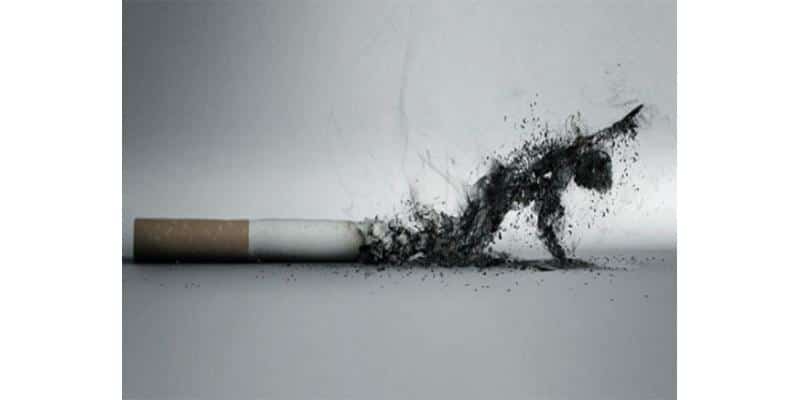Tobacco Brochure
Tobacco facts:
- Tobacco kills half of people who use it.
- Tobacco is the most important preventable cause of cancer.
- Tobacco use kills more than 8 million people every year, 1.2 million of these people die from exposure to secondhand smoking
- Children in homes with smokers are more likely to develop diseases such as (respiratory diseases, heart problems and blood cancers)
General health effects of tobacco:
- Bad breath.
- Changing in the color of teeth.
- Inability of focus.
- Loss the sense of smell and taste.
- Increase the risk of developing different types of cancer specifically (lung, throat, mouth, bladder, kidney, pancreas, uterus and stomach).
- Children who born from smoker mothers or expose to secondhand smoking born with less weight and weaker immunity than children from non-smokers mothers.
- Premature aging and increases the appearance of wrinkles.
- Increase the risk of osteoporosis.
Types of smoking:
- Active smoking: if the person is smoker or using any tobacco products.
- Passive smoking: inhaling the smoke from cigarettes or Shisha from other smokers.
- Thirdhand smoking: the accumulation of nicotine and other chemicals from tobacco smoke of surfaces in enclosed places. People are exposed to these chemicals by touching contaminated surfaces or inhaling gases emitted from the surfaces.
Throat cancer survivor.. Mubarak Jeham Al-Kawari :
“I had throat cancer .. because of my leniency with the smokers”
Types of Tobacco
- Cigarette:
A roll of tobacco and chemicals that burned and inhaled.
Components:
Contains more than 7000 chemicals and 69 carcinogens such as:
- Material for paving roads.
- Lighter gas (Butane).
- Carbon monoxide.
Most common health effects of Cigarette:
- Lung, throat, mouth and esophagus cancer.
- Increase risk of respiratory and heart diseases and atherosclerosis.
- Nervous system problems.
- Sweika:
Crushed tobacco leaves, in addition to chemicals and carcinogenic substances, are placed in the lower or upper mouth gums. Cause addiction because it contains more concentrated nicotine than cigarettes. It is considered as smokeless tobacco.
Components:
- Contains more than 28 chemicals and carcinogens substances.
- Animal waste.
- Intense dose of nicotine.
Most common health effects of Sweika:
- Nicotine addiction.
- Oral, esophagus and pancreas cancers.
- Increase risk of heart disease and stroke.
- Shisha (Hookah)
Pips for smoking charcoal tobacco by passing it in water before inhaling it.
- Shisha’s flavor: Tobacco leaves mixed with glycerin and honey in addition to nicotine and harmful substances present in cigarettes.
- One hour of shisha smoking equals 200 cigarettes puffs.
Components:
- 4000 Toxic substances.
- Carbon monoxide.
- carcinogens and chemicals substances.
- Burned substances come from lightened charcoal
Most common health effects of shisha:
- Cause lung, esophagus and throat cancers.
- Increase the risk of communicable diseases.
- E-cigarettes
E-cigarette, E-hookah or E-pipe are devices that works with a battery that heats the nicotine liquid on heavy doses and in different flavors.
- Not a safe alternative to quit smoking.
Components:
- Nicotine in intense doses.
- Chemicals substances.
Most common health effects of E-cigarettes:
- Increase the risk of addiction because it has high doses of nicotine.
- Lung diseases.
- Poisoning in the case of accidentally swallowing nicotine liquid.
- Risk of possible battery explosion.
- Smoking pipes:
Tobacco smoking tool, of various shapes and sizes, containing a high concentration of chemicals and nicotine.
Components:
- High dose of nicotine.
- Chemicals substances.
Most common health effects of smoking pipes:
- Increase the risk of lung diseases.
- Nicotine addiction.
Quit smoking:
Willingness and determination are the first steps to quit smoking.
Benefits of quit smoking:
- After 20 minutes: The heart rate and blood pressure decrease.
- After 2 – 3 months: blood circulation and lung function improve.
- After a year: the risk of heart disease is reduced by half.
- After 5 years: the risk of developing stroke decrease.
- After 10 years: the risk of developing lung cancer decreases by half.
Ways to help in quit smoking:
- Try the 4D’s:
- Delay for a few minutes, the urge to smoke will pass.
- Deep breathe (slowly and deeply).
- Do something else, ring a friend or do some exercise to distract yourself.
- Drink water take time out and sip slowly to keep you hands and mouth occupied.
- Visit the smoke cessation clinics.
- Use some nicotine alternatives products.
- Stay away from smoker’s friends and places where you use to smoke.
- Quit smoking using leaser technique: The doctor will spot the leaser light on different 31 sensory point on the smoker face and hands, which reduce the body desire to nicotine during a treatment period express in more than one session decided by the specialist doctor.
Additional information:
- Smoking cessation clinic in health centers call: 107
- Smoking control center in Hamad medical cooperation call: 40254981 – 40254983
References
- https://www.cdc.gov/tobacco/data_statistics/fact_sheets/tobacco_industry/hookahs/index.htm
- https://www.mayoclinic.org/healthy-lifestyle/quit-smoking/in-depth/chewing-tobacco/art-20047428
- https://www.cdc.gov/tobacco/data_statistics/fact_sheets/smokeless/health_effects/index.htm
- https://www.lung.org/stop-smoking/smoking-facts/whats-in-a-cigarette.html
- https://www.cdc.gov/tobacco/data_statistics/fact_sheets/smokeless/health_effects/index.htm
- https://www.fda.gov/tobacco-products/products-ingredients-components/cigarettes
- https://www.quit.org.au/resources/multicultural-groups/explainer-shisha-pipes-vs-cigarettes/
- https://www.cdc.gov/tobacco/data_statistics/fact_sheets/index.htm
- https://www.cdc.gov/tobacco/basic_information/secondhand_smoke/children-home/index.htm
- https://www.cdc.gov/tobacco/data_statistics/fact_sheets/health_effects/tobacco_related_mortality/index.htm
- https://www.cancer.gov/about-cancer/causes-prevention/risk/tobacco
- https://www.who.int/tobacco/quitting/benefits/en/

